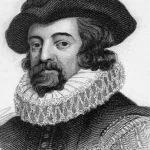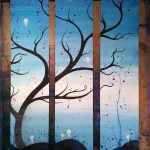Triptych is an artwork comprised of three panels or pieces, each playing a significant role in conveying narrative, symbolism, and artistic expression. Originating from the Greek word “triptykhos,” meaning “three-layered,” triptychs have a rich history spanning various cultures and artistic movements, serving as potent tools for storytelling, religious devotion, and creative exploration.
Historical Significance

Triptychs have deep roots in religious art, particularly in the Western tradition, where they adorned church altarpieces during the Middle Ages. These artworks, often elaborately framed, depicted scenes from biblical narratives such as the Madonna and child, the birth of Jesus, and the crucifixion. They functioned not only as visual aids for prayer but also as focal points for spiritual contemplation.
Beyond religious contexts, triptychs have been utilized in other cultures and regions, each imbuing them with unique cultural significance and symbolism. In East Asia, folding screens often served similar purposes, showcasing intricate paintings or calligraphy across multiple panels.
Symbolism and Interpretation

Triptychs carry symbolic meanings beyond their narrative content. The arrangement of panels can symbolize concepts such as past, present, and future or heaven, earth, and hell. Additionally, the division of the triptych into three parts can evoke notions of balance, harmony, and completion.
Viewers engage with triptych artworks in diverse ways, interpreting symbolism, narrative, and artistic techniques to derive meaning. The juxtaposition of images across panels invites contemplation and reflection, encouraging viewers to explore connections and narratives within the artwork.
Contemporary Trends and Artists
While rooted in tradition, triptych art continues to evolve in contemporary contexts. Artists explore various themes, techniques, and materials to push the boundaries of the format. Digital triptychs, mixed media installations, and experimental compositions are just a few examples of how artists reinterpret and innovate within the triptych format.
Contemporary artists employ triptychs to address contemporary issues, express personal narratives, and engage with viewers on a deeper level. These artists harness the power of triptychs to evoke emotion, provoke thought, and spark dialogue in today’s diverse artistic landscape.
Technical Aspects and Materials

The creation of triptychs involves careful consideration of technical aspects and materials. Artists may use traditional mediums such as oil paint on wood panels or explore digital techniques and mixed media approaches. The choice of materials influences the texture, color palette, and overall aesthetic of the artwork, contributing to its visual impact and symbolic resonance.
Psychological and Emotional Impact
Triptychs possess a unique ability to evoke strong emotional responses and have a profound psychological impact on viewers. The arrangement of panels, composition, color choices, and artistic elements all play a role in shaping the viewer’s experience. Triptychs can evoke a sense of awe, contemplation, or introspection, inviting viewers to immerse themselves in the narrative and symbolism of the artwork.
In conclusion, triptych art transcends its historical origins to remain a potent and versatile artistic format. From its religious symbolism to its contemporary interpretations, triptychs continue to captivate viewers, inspire artists, and provoke thought in today’s dynamic art world. Whether exploring traditional narratives or pushing the boundaries of artistic expression, triptychs offer endless possibilities for creative exploration and interpretation.







